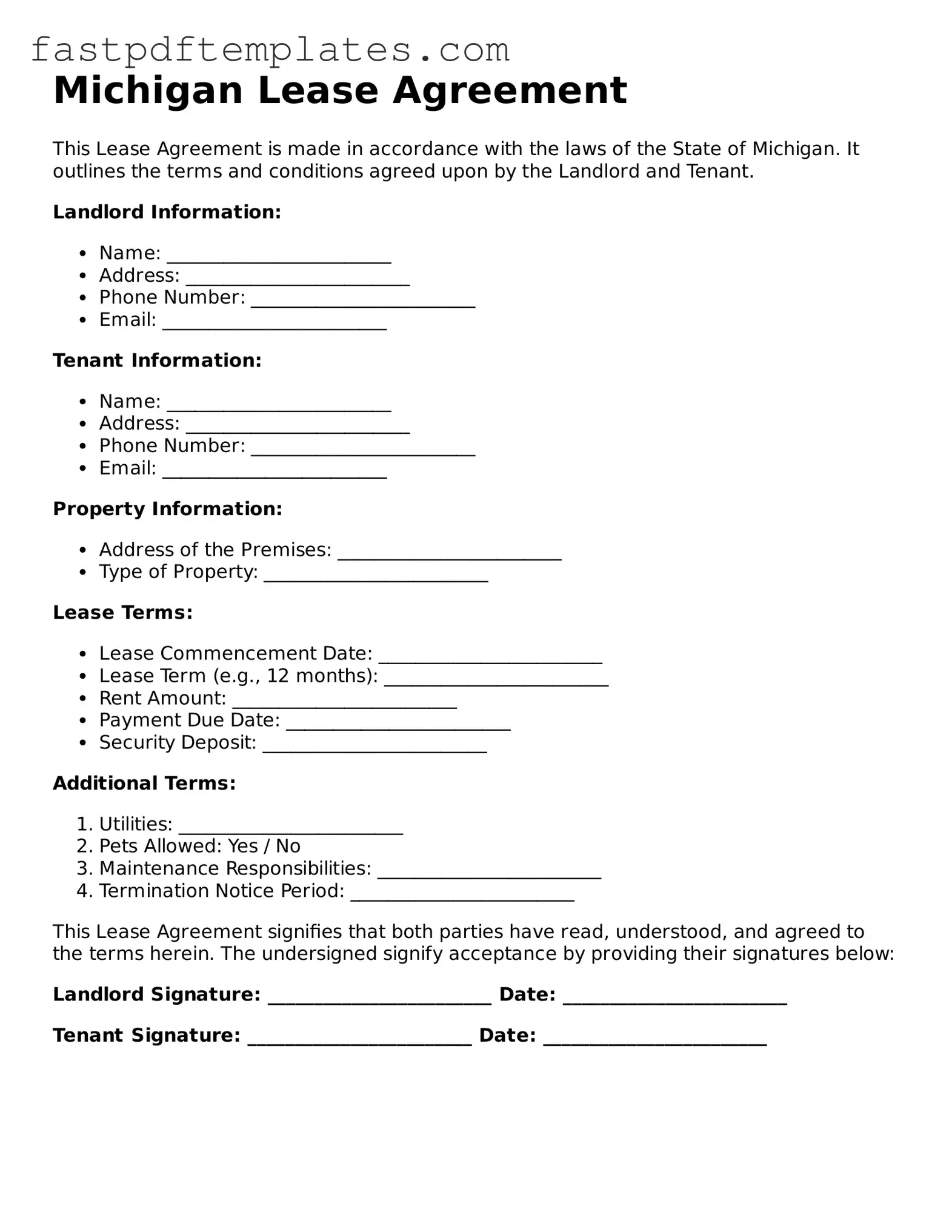The Michigan Lease Agreement form shares similarities with the Residential Lease Agreement, which is commonly used across many states. Both documents outline the terms and conditions under which a tenant can occupy a rental property. They typically include details such as the rental amount, duration of the lease, security deposit requirements, and the responsibilities of both the landlord and tenant. The primary purpose of these agreements is to protect the rights of both parties while providing a clear framework for the rental arrangement.
Another document that resembles the Michigan Lease Agreement is the Commercial Lease Agreement. This type of lease is specifically tailored for business purposes and often contains more complex terms than residential leases. While both agreements cover rental payments and property use, commercial leases may also address issues like zoning laws, tenant improvements, and the potential for lease renewal or termination. The complexity of commercial leases reflects the unique needs of businesses compared to individual tenants.
The Sublease Agreement is another document akin to the Michigan Lease Agreement. A sublease occurs when a tenant rents out their leased property to another party, known as a subtenant. Like a standard lease, a sublease agreement outlines the terms of occupancy, including rent payment and duration. However, it often requires the original tenant to remain responsible for the lease obligations to the landlord, adding a layer of complexity to the rental arrangement. Both documents aim to define the relationship between parties and ensure compliance with the original lease terms.
The Rental Application is also similar in nature to the Michigan Lease Agreement, as it serves as a preliminary step in the leasing process. While the lease agreement formalizes the rental terms, the rental application gathers essential information about potential tenants. This document typically includes personal details, rental history, and financial information, allowing landlords to assess the suitability of applicants. The successful completion of a rental application often leads to the drafting of a lease agreement, making it a crucial component of the leasing cycle.
Lastly, the Roommate Agreement bears resemblance to the Michigan Lease Agreement, particularly in situations where multiple individuals share a rental property. This document details the rights and responsibilities of each roommate, including rent division, utility payments, and house rules. While it may not replace the lease agreement with the landlord, it supplements it by clarifying expectations among roommates. Both agreements aim to foster a harmonious living environment while ensuring that all parties understand their obligations.
